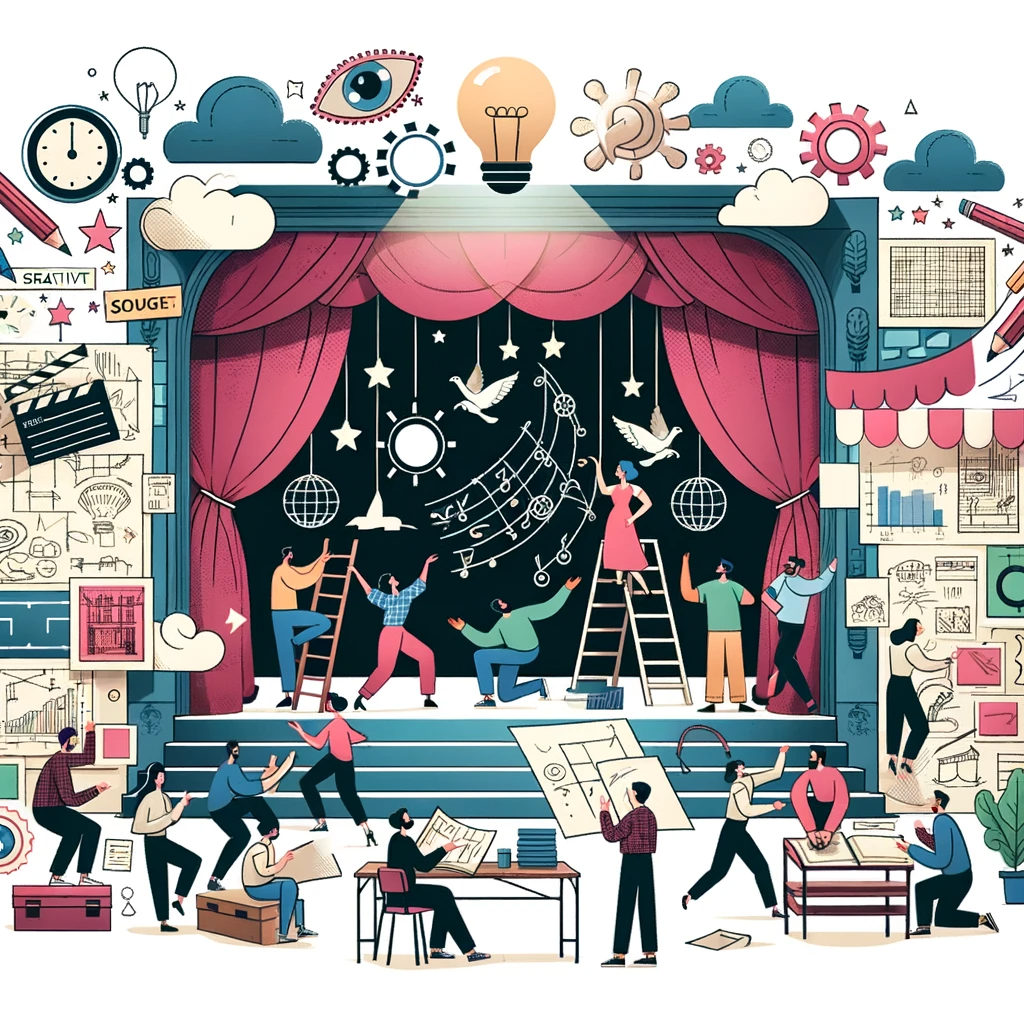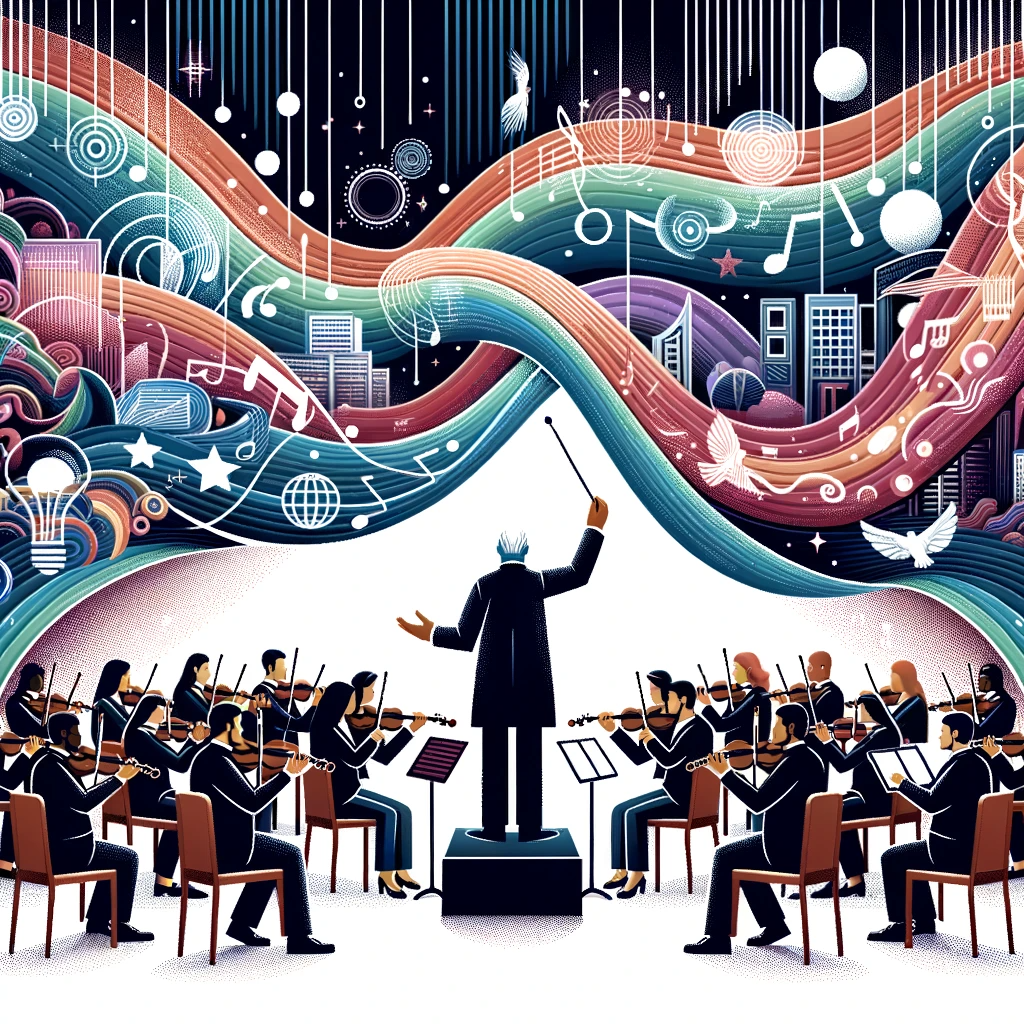
Image by DALL·E 3
Something we’ve learned at Gemstone is that concepts need to be experienced to be understood, and skills need to be practised to be developed. By combining useful frameworks and tools with practical activities and real-life scenarios we aim to create sessions that feel insightful, useful and empowering.
We approach training design using our philosophy that everyone has unique capacities and hidden gems: cognitive diversity is critical in our creative process.
The actors
There are three main characters in our design team—the actors are regular, although we switch hats and benefit from external input from time to time:
- The Visionary understands the big picture and the learning journey that participants must take (usually Coralie)
- The Systems Thinker is able to build frameworks and activities that click (usually me)
- The Executor can translate concepts into practical implications that resonate with participants’ experience (usually Michael).
The acts
There are three acts to the design process: content, flow and experience.
1. Content
First, on the Visionary’s side, come research, ideas, and a firm idea of the session outcomes that will drive the customer objectives. These outcomes include not only intellectual learning but also non-material transformation outcomes (e.g. the spirit of the discussion; the virtues that we want to foster). This is where the Visionary shines: after this step, the outcomes, both intellectual and transformative, are crystal clear.
After the outcomes, the Systems Thinker assembles a framework that brings structure and integrates concepts so that they are easier to understand and put into practise.
A theory is useless without application, so at this stage the Executor integrates examples that link the theory directly to scenarios that are relevant to participants. They make sure the concepts are useful, relatable and straightforward to understand. Without this step, concepts would remain concepts, and ideas would lose their impact.
2. Flow
Once the content is finalised, we use the Gemstone formula to build the session flow. The sequence in which participants discover, reflect on, practise and integrate new concepts is carefully thought-out to maximise clarity and memorability. Different parts of the flow have different objectives:
- Discovery activities, which allow participants to immerse themselves without being constrained by existing experience
- Opportunities for individual and collective reflection, to draw upon the knowledge in the room
- Presentation of concepts and theories in a way that puts structure around participants’ innate understanding
- Practise and consolidation, where participants can gain experience and receive instant feedback.
3. Experience
At this stage our focus turns towards the activities: the Visionary describes a brief including the objectives and the learning outcomes and the Systems Thinker crafts a range of prototypes for testing and feedback. Often, ideas don’t quite work, and we brainstorm alternatives. The ‘training lab’ is full of unsuccessful experiments that may one day, with a little tweaking, see the light of day.
Gradually the activities come to life as the Systems Thinker finalises the mechanics and materials.
Finally, we run through the whole session, each playing our role to bring a different perspective to the stage:
- The Visionary ensures that we’re building a meaningful space that balances experiential elements, introspection, and sharing, and that the learning outcomes and mindset shifts are guided and intentional
- The Systems Thinker checks that the frameworks are robust, the activities work, the logistics make sense, and that timings are realistic
- The Executor makes sure the material is understandable, the content relevant, and the examples fit the customer’s reality.
Once all three roles are satisfied, we know that we have a strong session to deliver, and we move from design to preparation—another subject for another day!
Some lessons we learned along the way
It’s a journey for us as well as the participants. Here’s what we’ve learned over the years:
- Build the training with the customer. They know best what their needs are, and whilst they are seeking external expertise, it needs to align exactly with the context of the organisation, teams and individual participants. It’s part of your role as a trusted advisor
- Play to each other’s strengths. This requires strong self-awareness so that you understand where you contribute to the process, and where you can step back. The outcome: training that is uniquely transformative
- Create meaningful spaces. Establish in advance the rules, roles and spirit of discussion for each design session. This pays off by keeping the exchange constructive and in scope. I’ll write more about spaces in the future, as this is a big component of our programmes
- The most powerful learning comes from the rich insight and experience of participants—what we call their ‘hidden gems’. Everyone has the capacities already. It’s our job to make them shine.

